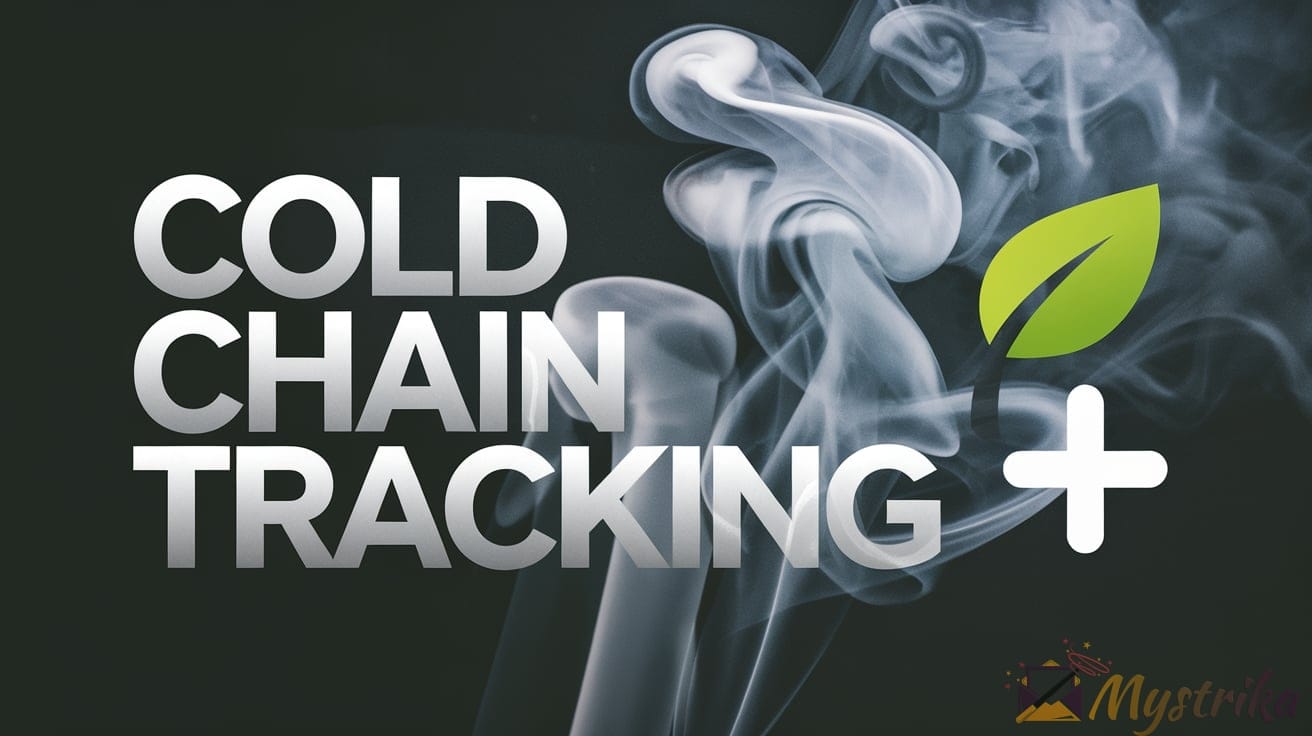Introduction to Cold Chain Tracking
For companies dealing with temperature-sensitive products like food, chemicals, and pharmaceuticals, having visibility into environmental conditions throughout transit is critical. This is where cold chain tracking comes in.
What is cold chain tracking?
Cold chain tracking refers to monitoring perishable goods from point A to point B to ensure optimal temperature, humidity, and other environmental factors are maintained. It involves using technology like GPS, sensors, and RFID tags to track shipments in real-time across the supply chain journey.
The “cold chain” encompasses the entire system of refrigerated storage, transportation, and distribution activities. Any break in the cold chain due to temperature fluctuations or delays can lead to spoiled inventory and products unfit for consumption. Cold chain tracking provides real-time alerts to address issues rapidly.
Why is cold chain tracking important?
Maintaining precise temperature control is crucial for products like meat, dairy, produce, medications, and more. A breach can lead to public health risks and financial losses. Cold chain tracking is critical for:
- Compliance – Many regulations mandate logging temperature data to ensure standards are met. Tracking helps companies comply with requirements.
- Preventing losses – Monitor shipments closely to minimize inventory write-offs from spoilage. Take corrective actions swiftly when deviations occur.
- Proof of handling – Provide documented evidence of proper handling when issues arise to resolve claims quickly.
- Food safety – Catch potential contamination early by tracking locations and temperature history. Prevent foodborne illnesses.
- Drug efficacy – Pharmaceuticals can lose potency if exposed to adverse conditions. Tracking preserves drug integrity.
- Sustainability – Optimize routing, loading and equipment usage to reduce waste from perishables perishing prematurely.
- Customer service – Update consumers and partners proactively on shipment status to set proper expectations.
Industries that rely on cold chain tracking
Industries below have extensive cold chain tracking needs:
- Food – Grocery chains, restaurants, meal delivery services etc track chilled, frozen and shelf-stable inventory.
- Pharma – Drug makers and distributors monitor biologics, vaccines and temperature-sensitive medicines.
- Chemical – Companies track chemicals requiring regulated environments during transport.
- Healthcare – Medical shipments containing organs, blood, plasma and lab samples use tracking.
- Retail – Retailers track perishable goods like plants, flowers and cosmetics requiring certain conditions.
- Hospitality – Restaurants, hotels and caterers track food deliveries to ensure freshness and safety.
Effective cold chain tracking is indispensable for maintaining quality, managing inventory efficiently, ensuring regulatory compliance and running transparent operations. Investing in robust tracking technology pays long-term dividends across cold supply chains.
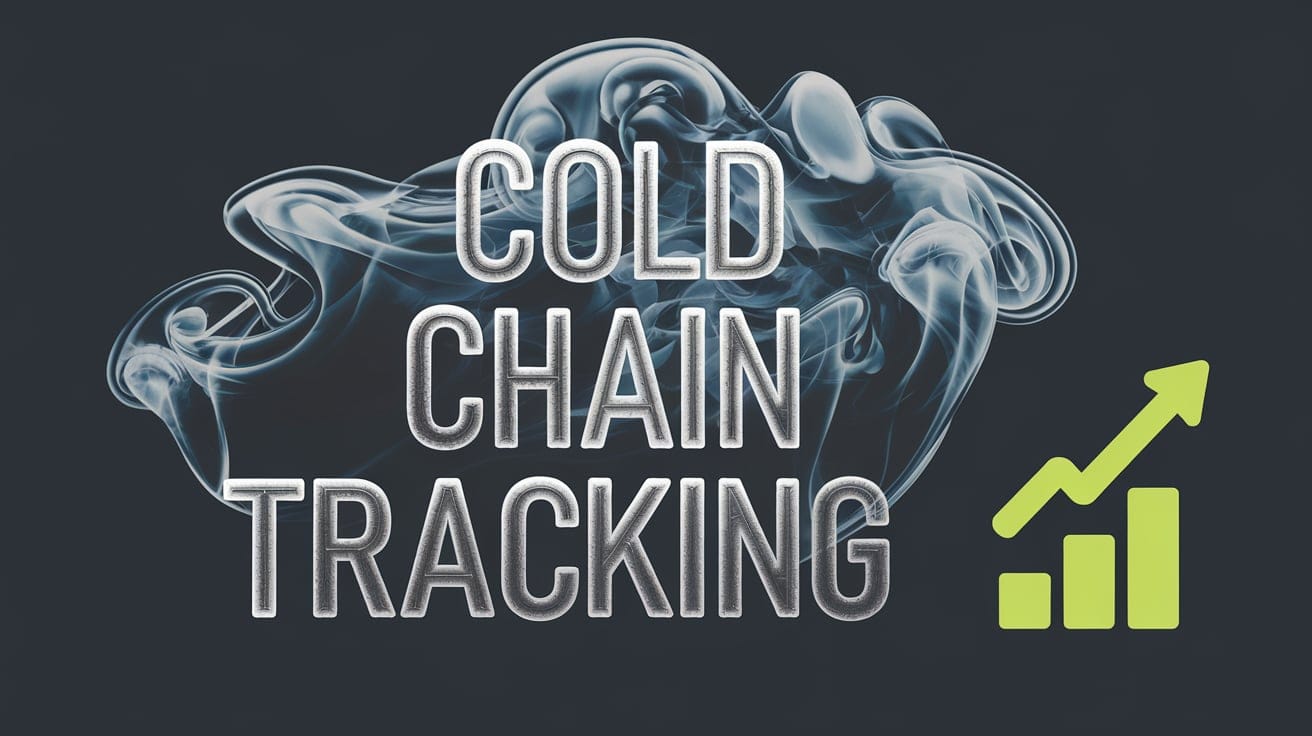
Cold Chain Packaging and Storage
Protecting perishables from temperature fluctuations starts with proper packaging and storage solutions. This section covers key options companies rely on to maintain cold chain integrity.
Specialized Packaging Solutions
Packaging is the first line of defense to shield sensitive shipments from heat, cold or variability during transit and storage. Common packaging methods include:
- Insulated containers – Sturdy, thermally-insulated boxes maintain stable interior temperatures. They are reusable and many have cooling features. Popular for pharmaceuticals.
- Refrigerant packs – Gel packs, dry ice, or phase change materials provide cooling inside boxes and trucks temporarily. Best for short journeys.
- Insulated blankets – Quilts and blankets wrapped around pallets or totes to preserve temperatures for truck, rail or ocean shipments.
- Vacuum insulation panels (VIPs) – VIPs are high-performance thermal insulators shielding shipments from ambient temperatures. Lightweight option.
- Expanded polystyrene (EPS) – Sturdy EPS boxes insulate products in transit and are useful as shipping containers for chilled products.
- Polyurethane (PUR) – PUR containers offer sturdy protection and excellent insulation. Reusable and recyclable.
- Crates and totes – Durable, reusable plastic crates maintain stable temperatures. Stackable for easy storage and transport.
Factors like required temperature range, shipment size, duration, and external temperatures dictate ideal cold chain packaging solutions.
Types of Refrigerated Storage Facilities
Proper warehousing infrastructure preserves integrity during storage periods. Common options include:
- Refrigerated warehouses – Facilities with giant coolers maintain precise temperature and humidity levels in a controlled environment.
- Blast freezers – Quickly blast freeze perishables to optimum storage temperature right after production.
- Cryogenic warehouses – Store products requiring extremely cold temperatures below -80°C like biologics.
- Cold storage terminals – Strategically located temperature-controlled terminals form a distribution network.
- Pharma cold rooms – Specialized cold rooms adhering to strict ranges for drugs and clinical materials.
- Walk-in freezers – Smaller movable walk-in freezers conveniently store frozen inventory onsite.
Automated monitoring, sanitation procedures, dock management, and trained staff trained in handling also contribute to effective cold storage.
Whether products need chilled, frozen or deep frozen conditions, customized refrigerated storage solutions are indispensable for supply chain stakeholders dealing with temperature-sensitive items.
Cold Chain Transportation Methods
Once properly packaged and stored, maintaining optimal temperatures during transport is critical. Various refrigerated transportation modes are used to ship chilled, frozen and deep frozen products.
Refrigerated Trucks, Railcars and Cargo Ships
Popular transportation options include:
- Refrigerated trucks – Trucks with cooling units to control cargo environment. Capacities range from small vans to large 53’ trailers.
- Refrigerated railcars – Railcars with cooling appliances and insulation to maintain precise temperatures in transit. Cost-efficient for long distances.
- Reefer ships – Cargo vessels with refrigeration systems and thermal containers to ship perishables overseas. Vital for global cold chains.
- Intermodal containers – Standard containers retrofitted with refrigeration machines and insulation panels. Stackable and versatile.
Factoring in dimensions, weight, transit duration and temperature requirements helps determine the ideal truck, railcar, vessel or intermodal container combination.
Air Transport for Pharmaceuticals
Air transport is common when shipping time-critical biologics, vaccines and pharmaceuticals needing consistently cold or ultra-cold conditions:
- Temperature-controlled trucks move shipments between airports rapidly over shorter distances.
- At airports, cold chain airport infrastructure like cool dollies protect shipments.
- On aircraft, active and passive packaging solutions maintain temperatures in cargo holds.
- Some airlines have developed specialized pharmaceutical handling procedures and infrastructure.
Though costs are higher, air transport reduces chances of temperature excursions over long overseas trips.
International Shipping Considerations
Global cold chains require further planning, like:
- Selecting optimal routes balancing speed, cost and risk of delays at customs.
- Partnering with logistics providers adept at cross-border perishable shipping.
- Monitoring conditions in real-time even when shipments change hands across borders.
- Researching specific international regulations around packaging, documentation, labelling, etc.
- Adjusting shipment schedules factoring in seasonal temperature changes across geographies.
- Securing necessary government approvals for pharmaceutical imports in some countries.
With global connectivity expanding access to new markets, having a world-class cold chain is a competitive advantage when trading internationally.
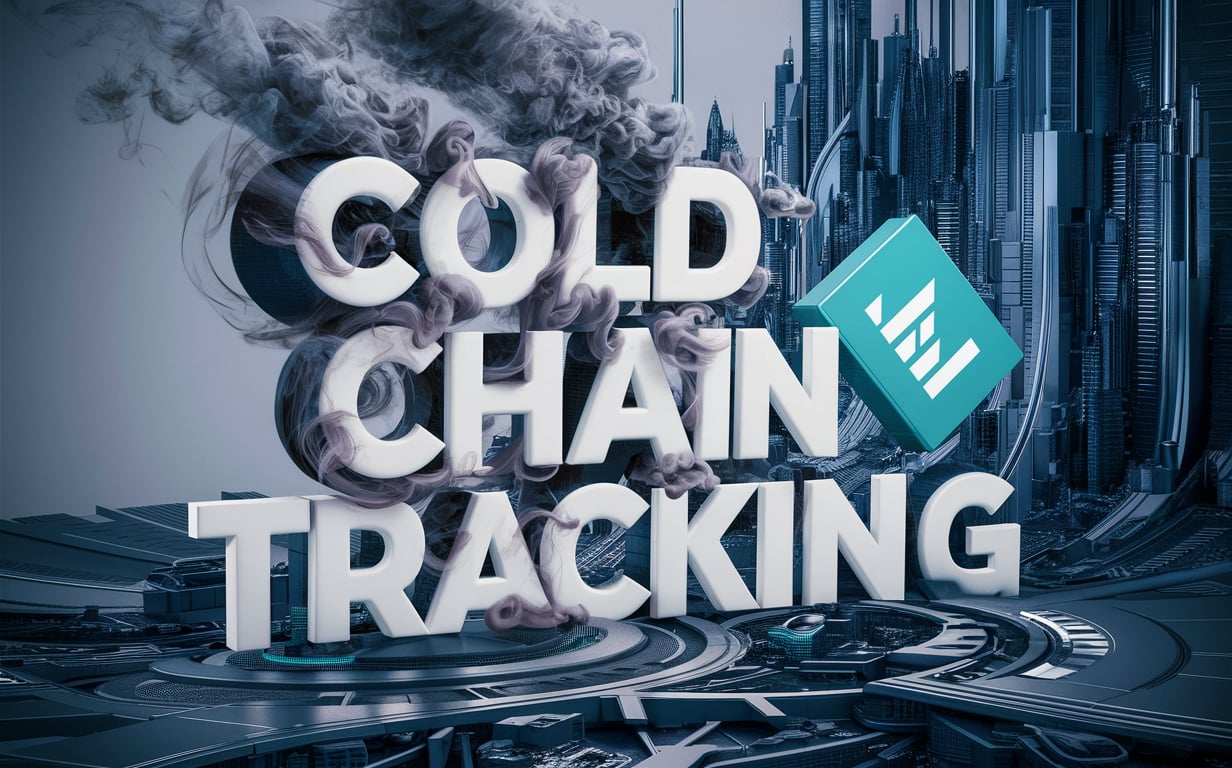
Cold Chain Tracking Technology
Technology plays a crucial role in providing end-to-end visibility into cold chain shipments. Various solutions track location, while sensor-based systems monitor cargo environment.
GPS, RFID and BLE for Location Tracking
Common technologies used for real-time location tracking include:
- GPS – Global positioning systems using satellites pinpoint shipment locations outdoors. GPS trackers attached to containers feed data to TMS software.
- RFID – Radio frequency identification tags store data that’s automatically scanned at set RFID reader checkpoints along the journey.
- BLE – Bluetooth low energy beacons broadcast signals scanned by Bluetooth-enabled gateways or smartphones.
- Telematics – GSM/GPS vehicle tracking units transmit location data via cellular networks to fleet management systems.
- Vessel monitoring – Carriers provide vessel geo-location data via portals. Third-party marine data providers also track ships globally.
- Air tracking – Airlines have systems providing aircraft position updates during flights carrying temperature-sensitive cargo.
Each technology has pros and cons based on cost, indoor/outdoor functionality, battery life and more. Companies combine solutions to get comprehensive visibility.
Data Loggers and Sensors for Temperature Monitoring
Common monitoring solutions include:
- Data loggers – Compact data loggers placed inside containers record ambient temperature and humidity at set intervals. Provides shipment history.
- Bluetooth sensors – BLE sensors pair with smartphones/readers to transmit temperature data when in proximity.
- IoT sensors – Smart IoT sensors take frequent readings and transmit instantly over internet via gateways. Enables real-time alerts.
- Time-temperature indicators – These cost-effective indicators change irreversibly if temperature thresholds are exceeded during transit.
- RFID tags – Special RFID tags record and store temperature data at key points, scanned later for analysis.
Fail-safe monitoring helps identify anomalies early so corrective actions can be taken before major damage.
IoT-Connected Solutions for Real-Time Visibility
IoT integration links tracking and monitoring devices, warehouses, trucks, etc. providing:
- Real-time tracking and status updates via GPS and telematics.
- Instant temperature and condition alerts from IoT sensors.
- End-to-end data visibility on dashboards.
- Automated handling of environmental breaches via smart contracts.
- Documentation storage for compliance reporting.
- Data analytics revealing optimization opportunities.
With so much at stake, real-time supply chain transparency and control improves efficiency, prevents losses and assures quality.
Integrating Tracking and Monitoring Systems
Rather than using disparate systems, integrating logistics provider data into internal platforms improves visibility and control. API and EDI integrations are key enablers.
Benefits of Connecting Carrier Data to Internal Systems
Reasons to integrate cold chain systems include:
Reduced manual effort – Automated data flows replace manual monitoring of carrier portals and temperature sensors.
Enhanced visibility – Shipments, conditions and exceptions are visible in real-time across the supply chain in one dashboard.
Accelerated response times – Instant notifications of delays, temperature breaches etc. speed up resolutions.
Greater supply chain control – Coordinate logistics, inventory, and orders using integrated shipment data.
Unified analytics – Combine carrier and internal data for comprehensive insights into costs, service levels, product life etc.
Documentation – Integrated data serves as proof of handling for compliance reporting.
Carrier collaboration – Resolve issues faster by looping in carriers earlier when exceptions arise.
By centralizing logistics data across platforms, teams save time, costs and effort while gaining robust cold chain visibility, control and insights.
APIs and EDI for Seamless Data Sharing
Two common integration approaches are:
APIs – Application programming interfaces provide real-time data exchange between apps and carriers. Offer flexibility but involve coding.
EDI – Electronic data interchange uses standard structured message formats for batch data integration. Simple to implement but less real-time.
Logistics providers like FedEx, UPS, JB Hunt etc. offer tracking APIs to automate data flows into ERPs, TMS and WMS systems. IoT providers similarly have APIs to integrate sensor data with internal apps.
For global shipments, integrating carrier and customs manifest data via ocean carrier APIs improves international visibility.
Integrations take time to build but the long-term benefits are substantial. Companies proactively assessing data integration needs reap significant cold chain rewards.
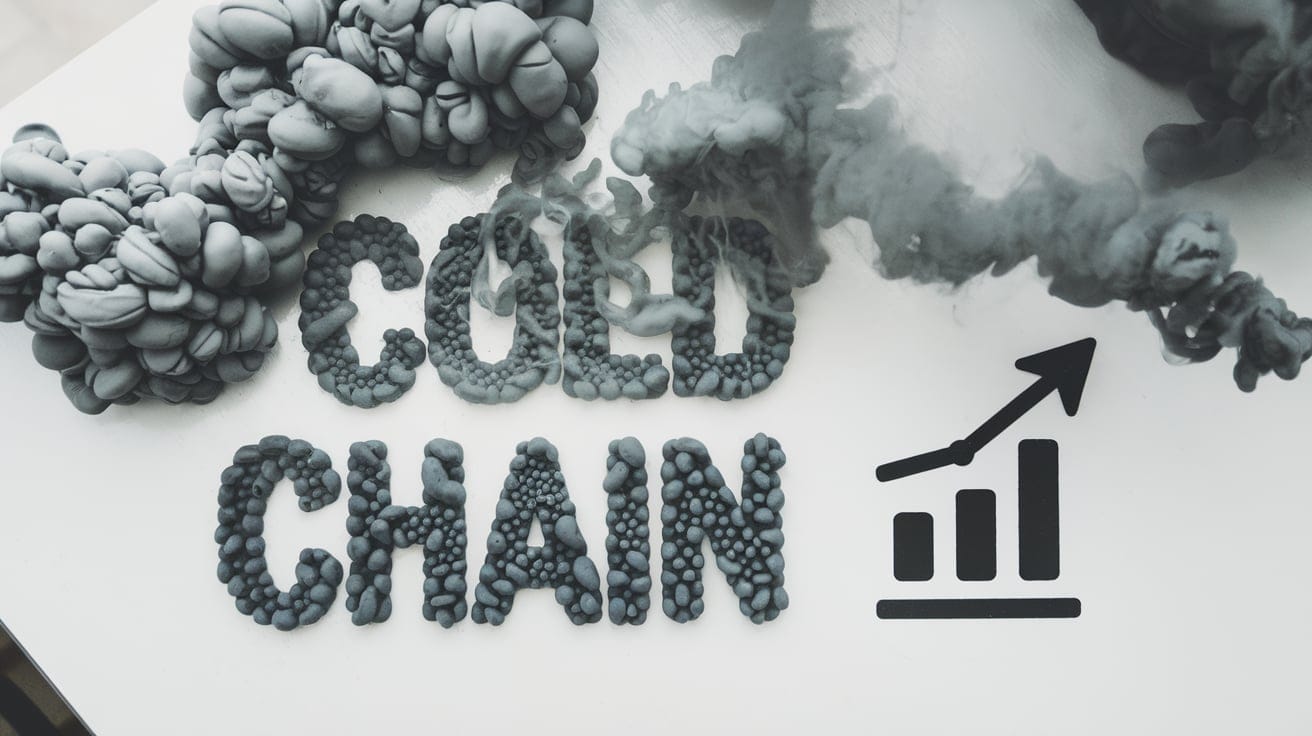
Cold Chain Standards and Compliance
Given the products involved, cold chain logistics stakeholders must adhere to strict government rules and industry best practices around handling, storage and delivery.
Government Regulations Around Storage and Transport
Various agencies regulate cold chains including:
FDA – The US Food and Drug Administration oversees food, pharmaceutical and healthcare product safety across the supply chain.
USDA – The Department of Agriculture has standards for transporting and storing agricultural commodities.
DOT – The Department of Transportation regulates carriage of hazardous materials including some pharmaceuticals.
EU GDP – The European Union’s Good Distribution Practice sets common standards for medicines distribution.
WHO – The World Health Organization provides global guidelines and requirements for transporting vaccines and biologics.
Individual countries also have specific domestic regulations covering packaging, labelling, data logging, van permits and more based on the products involved.
Industry Groups Helping Shape Best Practices
Influential cold chain industry organizations include:
Global Cold Chain Alliance (GCCA) – GCCA promotes cold chain excellence through regulatory advocacy, research and sharing best practices.
International Air Transport Association (IATA) – IATA publishes handling guidelines for airlines and shippers carrying pharmaceuticals and other cool cargo.
International Safe Transit Association (ISTA) – ISTA provides testing and certification programs that help standardize cold chain packaging.
Healthcare Distribution Alliance (HDA) – Represents pharma supply chain stakeholders. Develops guidelines and advocates for smart regulations.
Staying on top of evolving state, federal and global regulations takes extensive monitoring and investment. Joining industry groups helps businesses collaborate to tackle regulatory and operational cold chain challenges.
Outsourcing Cold Chain Logistics
Managing in-house cold chain logistics can be complex for shippers. Many leverage knowledgeable third-party logistics (3PL) providers managing warehousing, transport and deliveries.
Top Refrigerated Warehousing and 3PL Providers
Leading cold chain 3PLs include:
- Lineage Logistics – The world’s largest temperature-controlled storage and logistics provider. Manages over 400 facilities globally.
- Americold – A major temperature-controlled storage and transportation provider with over 250 warehouses worldwide.
- United States Cold Storage – Top refrigerated warehouse company operating 40+ facilities and offering transportation services.
- Burris Logistics – Specializes in refrigerated storage and transport solutions with 50+ locations across the eastern US.
- Hanson Logistics – End-to-end cold chain logistics provider with a strong network across the western US.
- Tippmann Group – Regional temperature-controlled supply chain leader across the Midwest with 20+ facilities.
These providers offer nationwide refrigerated warehousing, shipping, technology and supply chain services tailored to unique cold chain demands.
Niche Pharma Cold Chain Specialists
Pharmaceutical shippers often engage dedicated pharmaceutical 3PLs like:
- Cryoport – Global pharma logistics provider specialized in temperature-controlled storage and ground/air/ocean shipments.
- Sensitech – Focuses on supply chain visibility and monitoring solutions for life sciences cold chain compliance.
- Softbox Systems – Leading passive temperature-controlled packaging provider for pharmaceutical and biologics.
- Marken – End-to-end pharmaceutical cold chain logistics including storage, transport and last mile delivery.
- UPS Healthcare – UPS’s dedicated pharma and life sciences division equipped for extreme cold chain shipping.
Their specialized infrastructure, compliance expertise and handling processes for pharmaceuticals make the investment worthwhile for shippers.
Outsourcing to established cold chain 3PLs reduces risks, overhead costs and complexity while improving supply chain resilience and visibility.
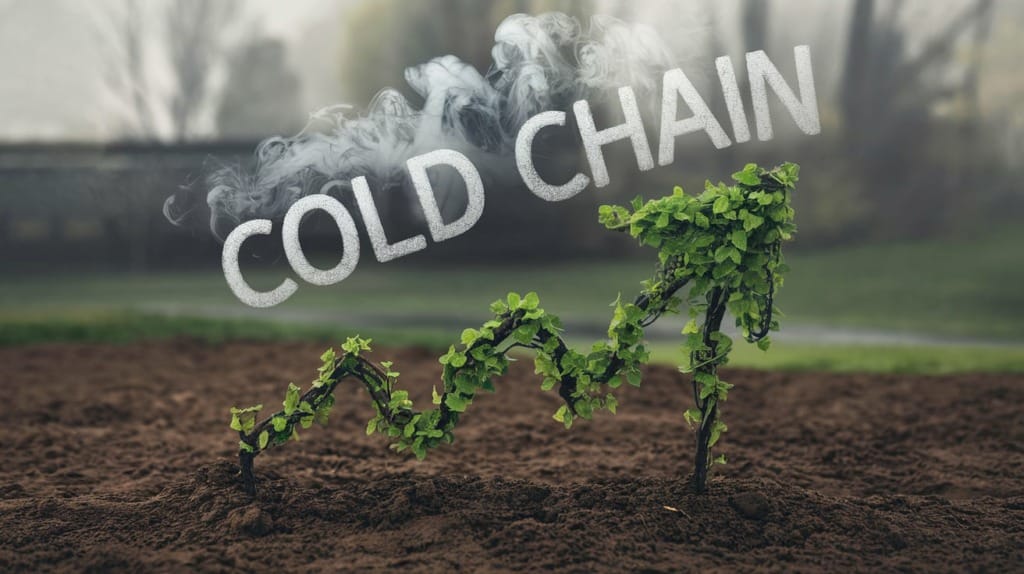
Optimizing the Cold Chain with Technology
Technology is not just about monitoring shipments. Leading cold chain companies also leverage solutions to actively optimize their supply chains.
Route Optimization and Load Planning Software
Software tools that optimize cold chain logistics include:
- Routing and dispatch software plot optimal delivery routes balancing timing, capacity, traffic, costs and perishability factors.
- Appointment scheduling systems sequence customer drop-offs efficiently minimizing wait times to preserve freshness.
- Load planning applications help optimize pallet building, container stuffing and truck loading to use space better.
- Warehouse management systems schedule put-away, picking and dock movements minimizing inventory time in the facility.
- Yard management software reduces bottlenecks at loading docks, allocating doors and parking intelligently.
Optimized routes, loading plans and warehouse workflows minimize shipment delays and accelerate deliveries to maintain product quality.
Predictive Analytics and Machine Learning
Emerging techniques like machine learning uncover supply chain insights:
- Demand forecasting – ML predicts upcoming demand more accurately to optimize inventory and transport capacity.
- Predictive maintenance – ML models estimate when refrigeration equipment needs servicing to avoid disruptions.
- Anomaly detection – Unsupervised ML identifies unusual shipment patterns warranting intervention.
- Estimated time of arrival – ML calculates dynamic ETAs accounting for changing route and climate conditions.
- Automated remediation – Bots handle common disruptions like re-routing shipments in case of traffic delays.
By applying intelligence to historical data, cold chains proactively improve service levels.
Blockchain for Enhanced Traceability
Blockchain allows securely sharing temperature data:
- Tamper-proof records – Blockchain ledgers immutably store timestamped temperature readings across the chain.
- Improved accountability – All parties verify handling was appropriate and determine liability if issues arise.
- Enhanced traceability – Pinpoint when and where temperature deviations occurred by tracing records.
- Increased consumer trust – Share temperature history with consumers to showcase handling compliance.
Blockchain brings greater accountability and transparency to cold chain processes.
Optimizing logistics while applying frontier technologies assures quality, drives savings and builds trust.
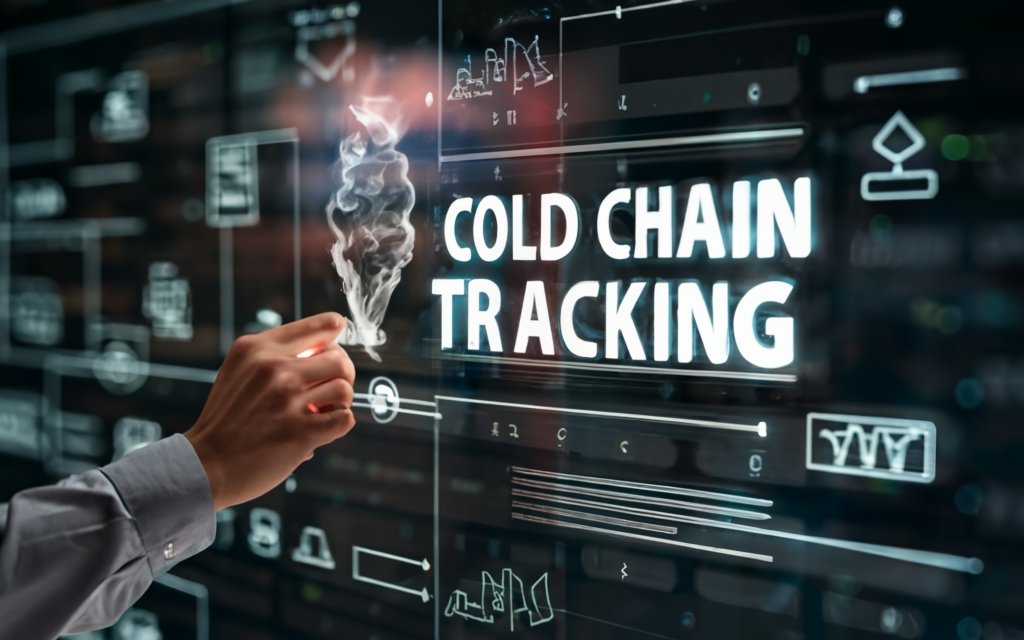
Overcoming Key Challenges in Cold Chain Logistics
Despite the benefits, cold chain logistics also comes with unique challenges that companies must tackle.
Infrastructure Costs and Maintenance
Maintaining cold chain infrastructure is expensive:
- High real estate costs for temperature-controlled warehouses in prime locations.
- Substantial energy consumption to run refrigeration and meet climate demands.
- Regular repair and maintenance of specialized material handling equipment.
- Technology investments in ERP integrations, IoT systems and data analytics.
- Compliance costs to implement mandated tracking, packaging or audit protocols.
Ongoing operating and investment costs can squeeze margins. Strategic facility locations, improved insulation, energy audits, equipment servicing and staged tech upgrades can increase sustainability.
Lack of Proper Handling Expertise
Cold chains require specialized expertise:
- Training warehouse staff and drivers thoroughly in standard operating procedures for handling perishables.
- Hiring technicians to properly service refrigerated trailers, shipping containers, and storage facilities.
- Building compliance teams to stay current on evolving regulations in different markets.
- Data scientists to glean insights from shipment data using analytics.
- Supply chain experts skilled in improving logistics for temperature-sensitive goods.
Developing such niche skills internally via training or recruitment is essential.
Complex Regulatory Requirements
Extensive regulations apply to cold storage, handling, and shipping:
- Data logging, packaging, labeling standards differ across regions.
- Storage facilities must pass recurring food safety inspections.
- Various permits mandatory for pharmaceutical transport vehicles.
- Special documentation and customs clearances for cross-border shipments.
Keeping current is challenging. Joining industry groups, hiring specialists, and technology aids compliance.
Though complex, cold chains become efficient and viable by proactively addressing these common barriers.
The Future of Cold Chain Logistics
Cold chain logistics continues to evolve. Key developments on the horizon include automation, sustainability and advanced packaging.
Increasing Automation and Robotics
Automation will reshape cold chains:
- Autonomous vehicles like driverless trucks and drones will transport cold cargo safely 24/7.
- Robotic pickers and sorters will help high-efficiency fulfillment of perishable orders.
- Machine learning systems will forecast demand, optimize routes, predict faults automatically.
- Computer vision and sensors will enable self-inspecting smart warehouses monitoring products.
- Blockchain-based smart contracts will enable autonomous handling of shipment issues like spoilage.
By reducing reliance on error-prone manual processes, automation and intelligence minimize costs and risks.
More Focus on Sustainability and Reducing Waste
Green cold chain practices gaining traction:
- Shift to renewable energy like solar-powered refrigeration and electric truck fleets.
- Natural refrigerants replacing synthetic greenhouse gas-emitting systems.
- Recycled and biodegradable insulation and packaging materials.
- Route optimization to minimize mileage and carbon emissions.
- Predictive analytics to reduce food spoilage and medicine waste.
- Carbon footprint tracking to identify emission reduction opportunities.
Sustainability unlocks cost savings while building goodwill with eco-conscious consumers.
Shift Towards More Passive Packaging Solutions
In packaging, key innovations include:
- Phase change materials providing longer-lasting thermal inertia without power.
- Improved insulation panels needing less refrigeration.
- Smart containers adjusting insulation levels in response to environment.
- Nano-technology films with unprecedented insulation properties.
- Standardized global interoperable container platforms.
- Biodegradable and compostable gel packs replacing disposable plastics.
Better packaging maintains temperatures longer, reducing environmental impact.
The cold chain industry sees exciting times ahead as technology transforms traditional supply chains. Adopting innovations early creates competitive advantage.
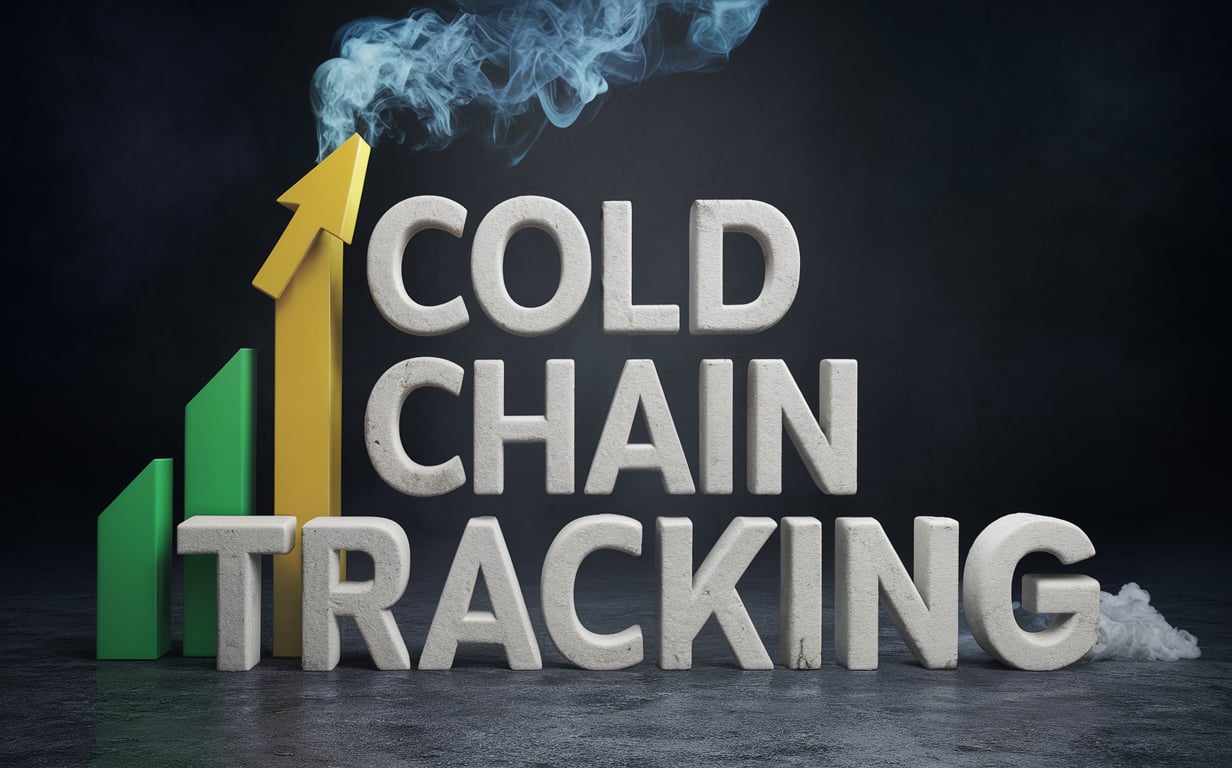
Key Takeaways
To recap, the major points covered in this comprehensive guide to cold chain tracking and monitoring include:
- Cold chain logistics is vital for businesses dealing with temperature-sensitive products like food, chemicals and pharmaceuticals. Tracking and monitoring helps maintain product safety, quality and efficacy across the supply chain.
- Proper cold chain packaging solutions and refrigerated storage facilities tailored to the product requirements are essential to maintain optimal conditions.
- Refrigerated trucks, railcars, air transport and ocean containers ship perishable items in climate-controlled conditions across short and long distances.
- Technologies like GPS, sensors, RFID and IoT provide real-time visibility into location and cargo environment en route. Integrating data insights into internal platforms is invaluable.
- Extensive regulations and industry best practices standardize packaging, handling, storage and shipping processes and must be complied with.
- Specialized cold chain logistics providers offer end-to-end solutions encompassing warehousing, shipping and monitoring for temperature-controlled supply chains.
- Route optimization, IoT, automation, blockchain and other innovations are transforming traditional cold chains to be efficient, transparent and sustainable.
With greater awareness of best practices and emerging technologies, businesses can gain better control over their cold chain logistics, assure product integrity and delight their customers.
Frequently Asked Questions
Q: What is cold chain logistics?
A: Cold chain logistics refers to the transportation, storage and handling of temperature-sensitive goods like food, chemicals and pharmaceuticals in climate-controlled conditions across the supply chain.
Q: Why is cold chain management important?
A: Maintaining proper temperatures preserves perishable product safety, quality and shelf life. Cold chains also ensure regulatory compliance.
Q: What products require cold chain logistics?
A: Common products include fresh produce, meat, dairy, frozen foods, chemicals, biologics, vaccines and temperature-sensitive medicines.
Q: What technologies enable cold chain tracking?
A: GPS, RFID, sensors, data loggers and IoT solutions provide real-time visibility into location, temperature, humidity and more.
Q: How does cold chain monitoring work?
A: Sensors and data loggers record cargo environment conditions. IoT devices transmit data to the cloud for real-time monitoring and alerts.
Q: What packaging is used in cold chains?
A: Insulated containers, coolant packs, thermal blankets, quilts, EPS boxes and other specialized packaging maintains temperatures.
Q: How are cold chain products transported?
A: Refrigerated trucks, reefer containers, climate-controlled railcars and aircraft are used for cold chain transportation.
Q: What are some key cold chain regulations?
A: Important regulators include FDA, USDA, WHO, EU GDP, IATA for sectors like food, pharma and healthcare.
Q: Who are the main cold chain logistics providers?
A: Leaders include Lineage Logistics, Americold, Cryoport, Burris Logistics, Tippmann Group and Sensitech.

